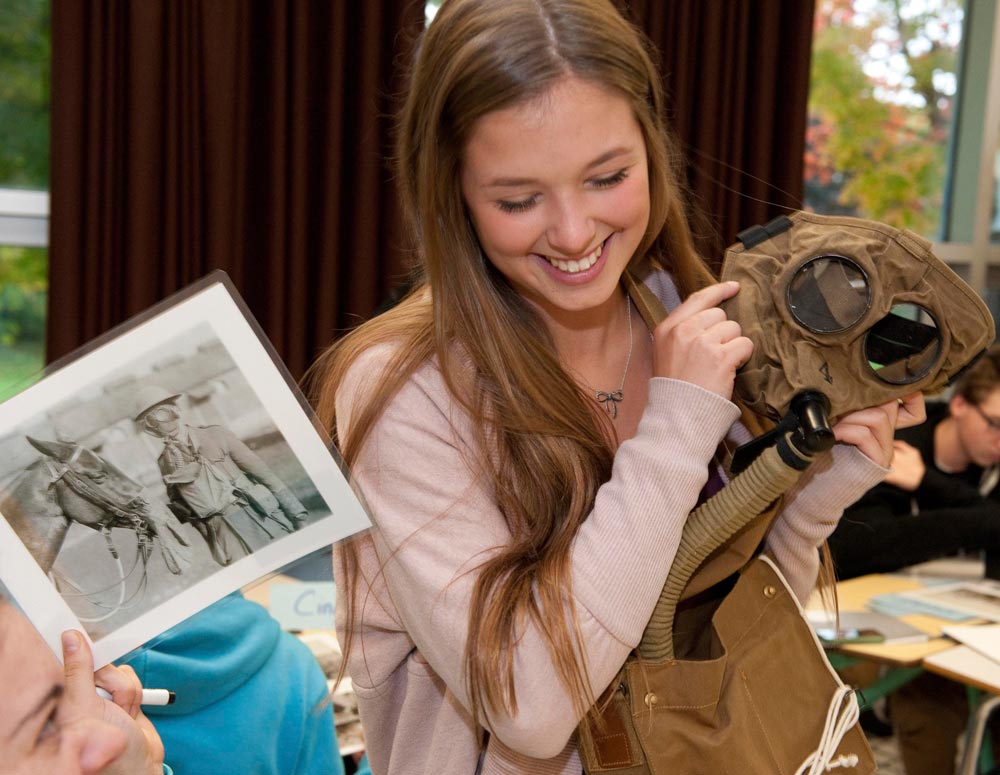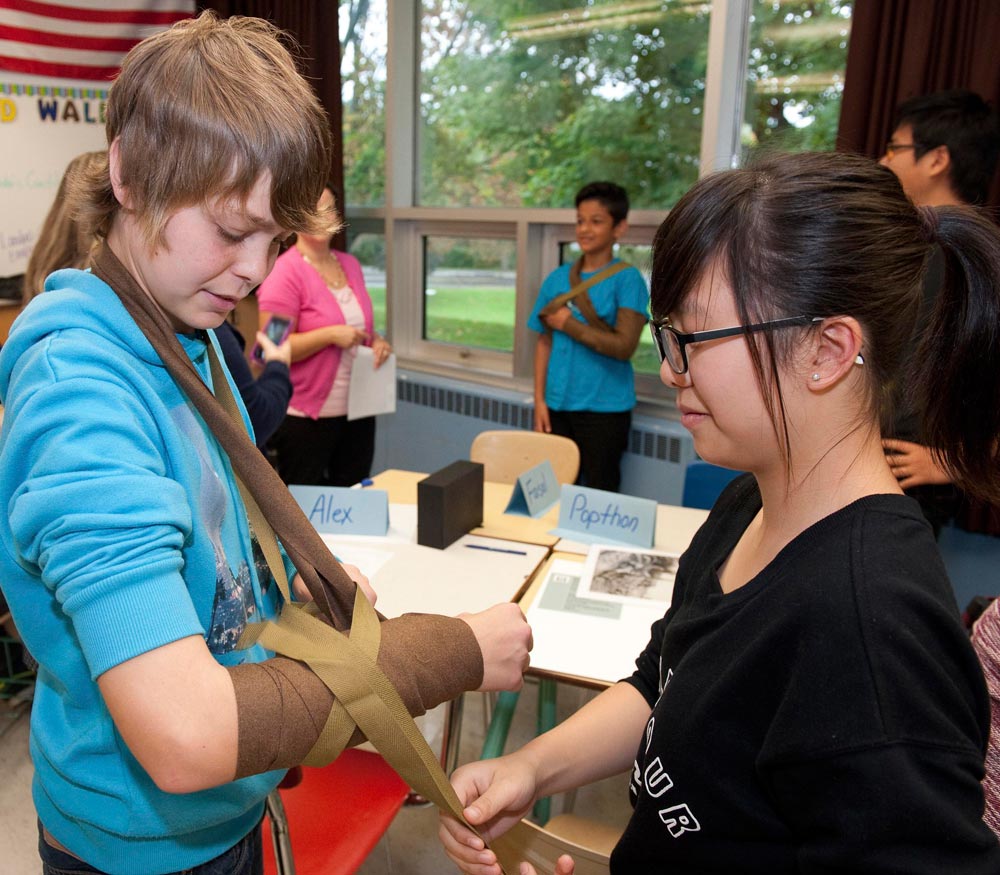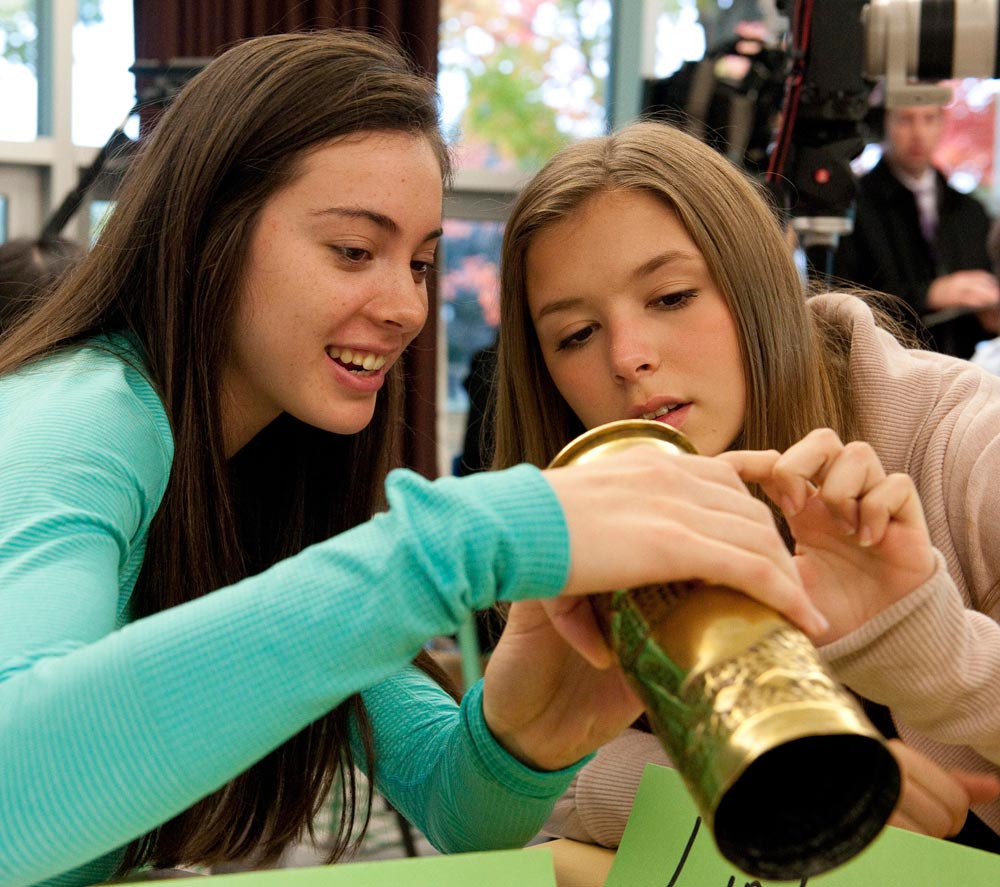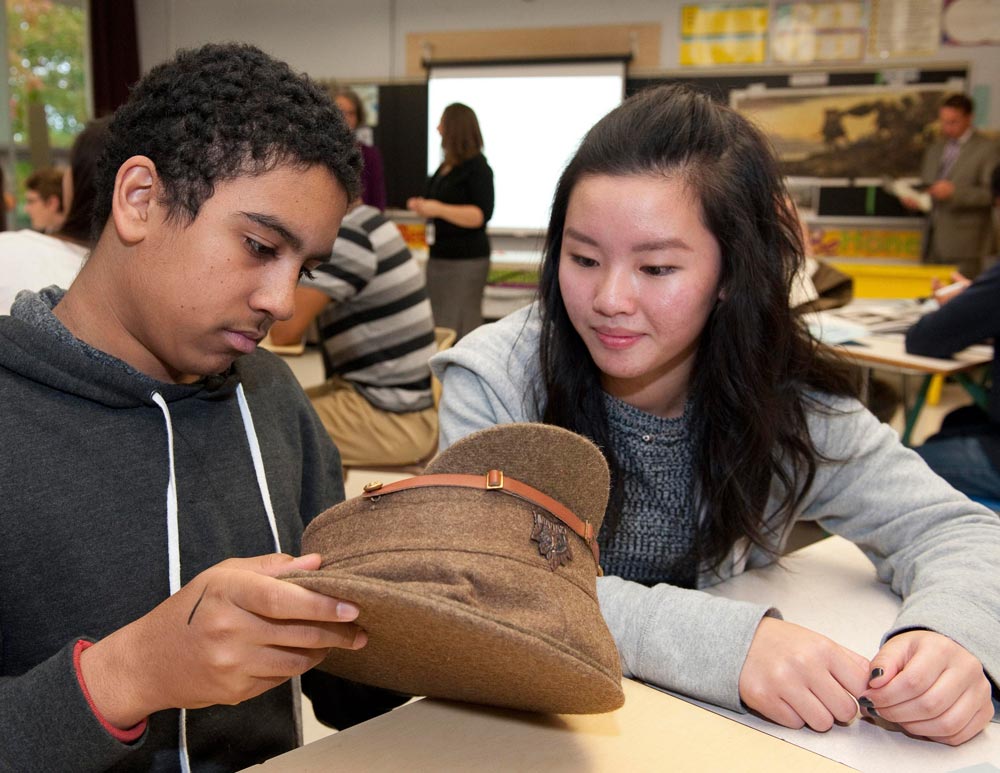

Students in an Ottawa classroom receive a lesson in battlefield first aid using artifacts from Supply Line First World War Discovery Box, an educational initiative of the Canadian War Museum. A service dress cap is one of a group of artifacts in the Canadian War Museum’s Supply Line First World War Discovery Box, which is proving to be a success in schools across the country. Photos Canadian War Museum
Steven Fouchard
Stag Special
What weighs 27 kilograms, contains five genuine and 17 reproduction First World War artifacts, including a gas mask and an example of trench art, and can be borrowed without charge by any school in Canada?
It’s the Supply Line First World War Discovery Box, created by staff at the Ottawa-based Canadian War Museum to give students hands-on experience of what it was like to be First World War soldiers.
Museum learning specialist Sandra O’Quinn said, as the name implies, the idea is to allow students to discover First World War history for themselves. And, unlike those in many museum exhibits, these artifacts are meant to be touched.
“We chose objects that would stand up to hundreds and hundreds of children handling them,” explained O’Quinn. “We want them to touch, try on and manipulate them.”
Items which are reproductions include the uniform jacket and cap, plus a gas mask. The authentic pieces include the cap badge, shadow boxes with shrapnel and barbed wire, shell casings and an example of trench art.
Trench art was created by soldiers during quiet moments in the muddy trenches in France or Belgium and an example is intricately engraved mortar shell.
Other items in the box include a gas alarm rattle, which British forces used to warn of chemical attacks, and a trench periscope.
The Discovery Box is modelled on another, similar project developed by war museum staff at its previous location on Sussex Drive. It was relocated to its current and much larger home on Ottawa’s LeBreton Flats in 2005.
The program was re-launched in September 2014 in recognition of the centenary of the Great War. Interest from schools was immediate and, in response to positive word of mouth from museum donors and others, more than 200 had signed on to participate before the official launch.
“We’re really happy with it,” said O’Quinn. “We’re most happy with the teachers’ response.”
She said it was gratifying when teachers reported the tactile approach made it easier to engage students with different learning profiles which are typically more difficult to reach.
She notes the program has proven to be most popular in high schools. Bilingual lesson plans to go along with the artifacts were developed for students in Grades 4 through 12, although the Discovery Box has also been introduced in classes from kindergarten to Grade 3.
Because the contents are hands-on, very tactile, it gives students an experience which they normally don’t get in a history classroom. Being able to see replicas and also authentic artifacts from that time period, it gives them an understanding and an experience that they wouldn’t get alone from reading something in a book or listening to a lecture or even watching a movie.
Pine Ridge Middle School eighth grade teacher Patricia Kasapowitsch, in Kingston, Nova Scotia, said the Discovery Box enhanced her lessons on the Great War.
“I have never been able to silence a classroom the way I did when I first demonstrated the gas alarm rattle. I have to admit it was one of my favourite objects and I thoroughly enjoyed making a few students jump as we discussed life in the trenches.”
Pine Ridge is located at CFB Greenwood, where a large number of students are from military families. Kasapowitsch said there was an immediate and positive reaction to the artifacts.
“As soon as it was rolled into the classroom, students excitedly approached my desk and began asking what it was and what was inside. As soon as we opened the box, everyone wanted to touch and to see everything.
“It was so exciting for my students to be able to hold and to try on a soldier’s helmet, service dress jacket and cap. Each of the artifacts allowed my students to experience history and to feel more connected to events that occurred well before their time.”
For more information or to view the objects online visit www.warmuseum.ca/supplyline/about-supply-line/



